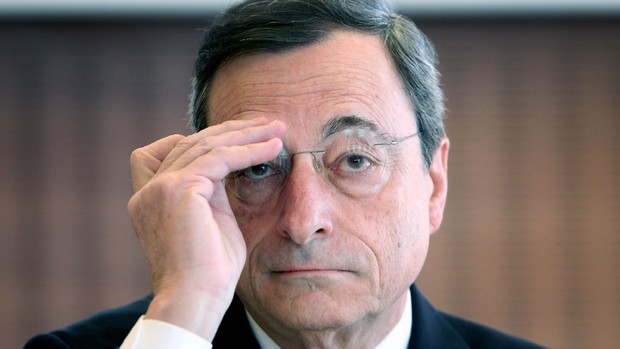Five charts say euro economy is starting to mend

By Bloomberg View
Wherever you look in financial markets, there's evidence that the euro zone economy is pitiable, while the U.S. is on a smooth trajectory to recovery. Dig into some of the recent European economic data, though, and there are surprising signs of life to be glimpsed on the continent.
ECB'S QE Quandary
First, the pessimism. In currencies, the euro has lost 20 percent of its value against the dollar in the past year. In stocks, the U.S. S&P 500 index has outperformed the STOXX Europe 600 index by more than 15 percent when both are measured in dollars; the one-year gap is closer to 20 percent in euros. And in bonds, deflation worries mean investors are willing to pay 0.07 percent for the privilege of lending to the German government for five years, while they charge Uncle Sam 1.4 percent.
And now for the good news. Although the textbooks suggest deflation -- defined as a sustained period of falling prices -- makes consumers unwilling to spend because they expect to get better bargains in the future, that doesn't seem to be happening in the euro region. In January, shoppers propelled retail sales up by 1.1 percent in the month, beating the 0.2 percent increase forecast by economists. The annual figure of 3.7 percent was the fastest growth in almost a decade, and outstripped economists' expectations for a 2.3 percent gain:
In parallel with the surge in retail sales, consumer confidence is also improving at a rapid clip. The dearth of inflation seems to be making people more trusting about their economic futures, rather than keeping them out of the shops, which bodes well for the outlook for gross domestic product growth:
Then there's the confidence survey that the European Commission conducts each month among 23,000 households. Although the negative balance of the poll shows pessimistis still outnumber optimists, March's -3.7 reading handily beat the -5.9 figure predicted by economists. That reflects a persistent trend in euro region data in recent months: Economists have erred continuously on the side of pessimism, and the figures have surprised on the upside. By contrast, the soothsayers have been tenaciously over-optimistic about the U.S. economy, as Citigroup's indexes of outcomes versus expectations for the two economies shows:
In the broader economy, some of the data on money supply suggests credit is about to start flowing again. Almost a decade ago, when Juergen Stark was the German Bundesbank's chief representative at the ECB, he told me his favorite chart to get a snapshot of the health of the euro region's economy was this one:
The index measures the change in credit flowing in the region, and suggests it hasn't expanded since March 2012; but as the most recent figures on the chart show, it was a whisker away from finally turning positive in January. That suggests the prospect of the ECB's quantitative easing program, flagged well in advance and finally launched at the start of this month, was already having the desired effect.
That bond-buying program also seems to be influencing price expectations. European Central Bank chief Mario Draghi's favored measure of the outlook for inflation uses the five-year inflation swap rate, measured five years forward, which measures how fast or slow traders and investors expect consumer prices to change. That measure has bounced off its lows even as government bond yields have headed deeper into negative territory; the most recent reading of 1.7 percent is up from a low of 1.48 reached in the middle of January, and is at least approaching the ECB's 2 percent target:
"Growth is gaining momentum," Draghi told the European Parliament on Monday. He's right. The question is why -- much like the region's economists -- markets in stocks, bonds and currencies have failed to take note.
Here we are to serve you with news right now. It does not cost much, but worth your attention.
Choose to support open, independent, quality journalism and subscribe on a monthly basis.
By subscribing to our online newspaper, you can have full digital access to all news, analysis, and much more.
You can also follow AzerNEWS on Twitter @AzerNewsAz or Facebook @AzerNewsNewspaper
Thank you!
